Are you planning to spend a week in Tenerife?
This Canary Island has a rich and proud cultural heritage, colonial towns to match any in Central or South America and dramatic forested landscapes. It’s a far cry from the popular perception that it is merely a sangria & sand flop for sun-starved Northern Europeans.
To make the most of your time there, follow my 1-week Tenerife itinerary. I’ve also included tips for where to stay, where to eat, what to see and how to get around.
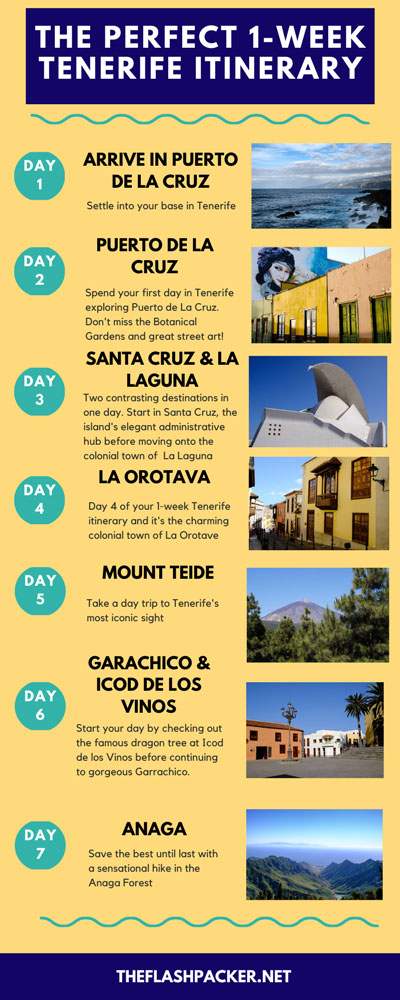
Some articles on this website contain affiliate links. This means that I may earn a small commission if you make a purchase through these links. As an Amazon Associate, I earn from qualifying purchases. Read the full disclosure here.
How I Spent a Week in Tenerife: 7-Day Itinerary
I visited Tenerife for a week in January and used the northern resort town of Puerto de la Cruz as my base. The vast majority of day trips were done independently, using the island’s bus services.
This itinerary is based on my experiences.
7-DAY TENERIFE ITINERARY
Day 1: Arrive at your base in Puerto de la Cruz
Day 2: Explore Puerto de la Cruz
Day 3: Santa Cruz de Tenerife and La Laguna
Day 4: La Orotava
Day 5: Day trip to Mount Teide
Day 6: Icod de Los Vinos and Garachico
Day 7: An easy hike in the Anaga Forest
Day 1: Arrive at your base in Puerto de la Cruz
On your arrival in Tenerife, get settled into your hotel or apartment.
If you have time, pick up your ten+ card from the bus station. This will be your golden ticket for exploring the island.
Day 2: Explore Puerto de la Cruz
But before jumping on one of the shiny green TITSA buses, spend your first full day in Tenerife getting to know your home for the week, Puerto de la Cruz. You should be able to cover its main sights in a day.
With the possible exception of the Botanical Garden, everything is walkable (although I did walk to the Botanical Garden). Therefore, you shouldn’t need to take public transport.
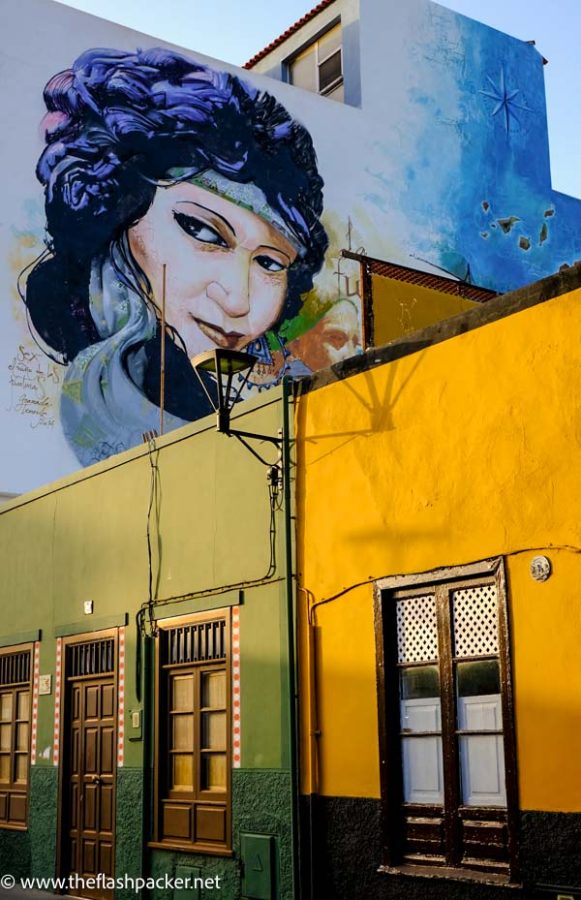
Things to see and do in Puerto de la Cruz
- The Botanical Garden (Jardín Botánico)
- The Orchid Garden (Jardín de Orquideas de Sitio Litre)
- Check out the street art
- View contemporary art in the Casa de la Real Aduana
- Iglesia de Nuestra Señora de la Peña de Francia
- Chapel of San Telmo
- Cool off at Lago Martiánez
- People watch in Plaza del Charco
- Castillo San Felipe
- Watch the waves crash over the sea wall (Explanada del Muelle)
Where to eat in Puerto de la Cruz
You won’t be short of choices of places to eat in Puerto de la Cruz. Most restaurants are concentrated in the old town.
Here are a few that I loved:
Bodega Julian | Calle Mequinez, 20
Good service and even better food with the best lamb dish of my life. Reservations recommended.
Chriniguito Pipo | Calle de la Marina, 2
Fill your boots with langoustines and Canarian potatoes as you watch the waves crashing onto the sea wall at this unpretentious café by the old harbour. Super fresh seafood and service with a smile.
Get there early for lunch for a prime seat.
Day 3: Santa Cruz de Tenerife and La Laguna.
Santa Cruz de Tenerife, the island’s capital, is home to half of the island’s permanent residents. It’s an attractive and laid-back city with a cluster of good museums and some striking architecture, notably the Auditorio de Tenerife.
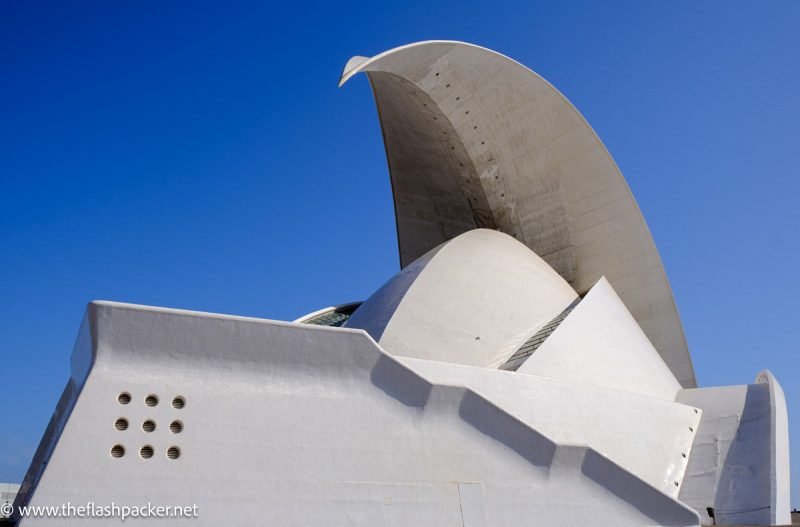
By contrast, the UNESCO World Heritage Site of La Laguna (or San Cristobal de la Laguna) is the first of the three colonial towns included in this 7-day Tenerife itinerary. It is known for its rich history – it was the island’s first capital from 1465 until 1723 – and for its fine Canarian buildings and monastery courtyards.
Getting to Santa Cruz de Tenerife and La Laguna
Start your day by taking bus #102 or #103 from Puerto de La Cruz’s new bus station to Santa Cruz de Tenerife, a journey time of 45 – 55 minutes.
Once you have finished exploring Santa Cruz de Tenerife, take the tram to La Laguna. The 40-minute journey takes you through the suburbs of the capital before climbing into La Laguna.
Alight at the terminus (Trinidad), from where it is a five-minute walk to the town’s Tourist Information Office.
When it is time to return to Puerto de La Cruz, catch #102 or #103 from La Laguna’s bus station, a 20-minute journey.
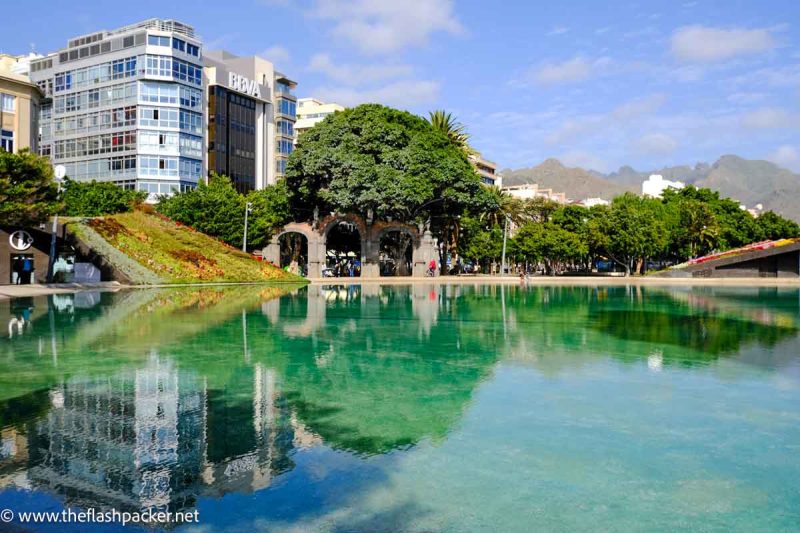
What to see and do in Santa Cruz de Tenerife
- Visit Igesia de Nuestra Señora de la Concepción
- Visit Plaza de España, also home to the city’s Tourist Information Office
- View the Auditorio de Tenerife from all angles
- Explore palm trees from around the world at the Palmetum
- Trace Tenerife’s history at the Museo de la Naturaleza y El Hombre
- View artwork by the great masters at the Museo de Bellas Artes (Iglesia de San Francisco)
- Visit Espacia de las Artes, Tenerife’s art & cultural centre
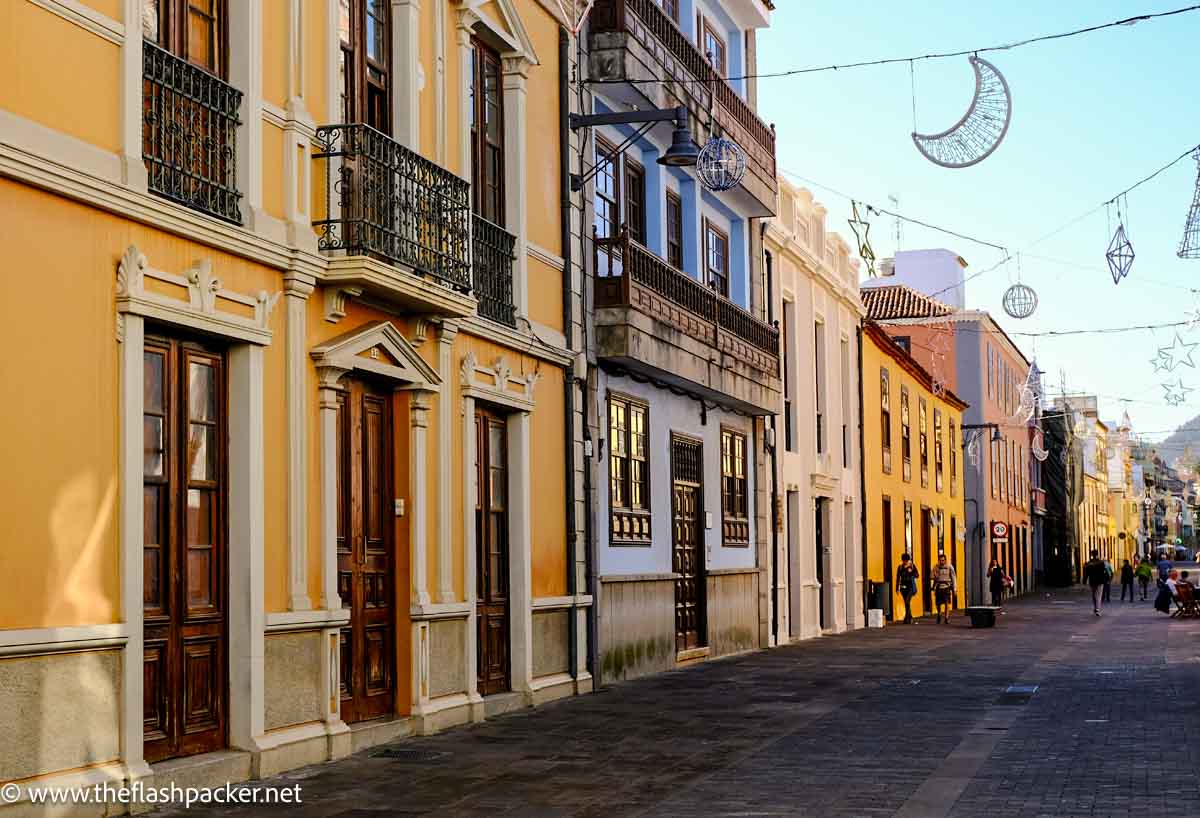
What to see and do in La Laguna
Sightseeing in La Laguna is concentrated in three blocks in the town’s historic core, bordered by Calle San Agustin to the north, Calle Herrandores to the south, Calle Viana to the east and Plaza de la Concepción to the west.
- Stroll through La Laguna’s historic streets
- Visit Igesia de Nuestra Señora de la Concepción (yes … another one)
- Admire the carved wooden gallery in the Museo de Historia de Tenerife
- Seek out the animal-shaped gargoyles at Salazar House
- Visit the cloisters of the Iglesia y Ex Covento de San Agustín
Day 4: La Orotava
Sitting in the shadow of Mount Teide, grand old townhouses line the steep narrow streets and lanes of the old town of La Orotava. Flanking its elegant squares are mansions with traditional wooden Canarian balconies.
Day-trippers flock here to view the best collection of these balconies in Tenerife, the Casas de Los Balcones. But La Orotava is so much more than this stretch of townhouses, with first-rate churches, museums and a small botanical garden.
Getting to La Orotava
Take bus #345 or #352 from Puerto de La Cruz’s bus station to La Orotava, a journey time of around 25 minutes. When it is time to return to Puerto de La Cruz, take bus #345 or #353.
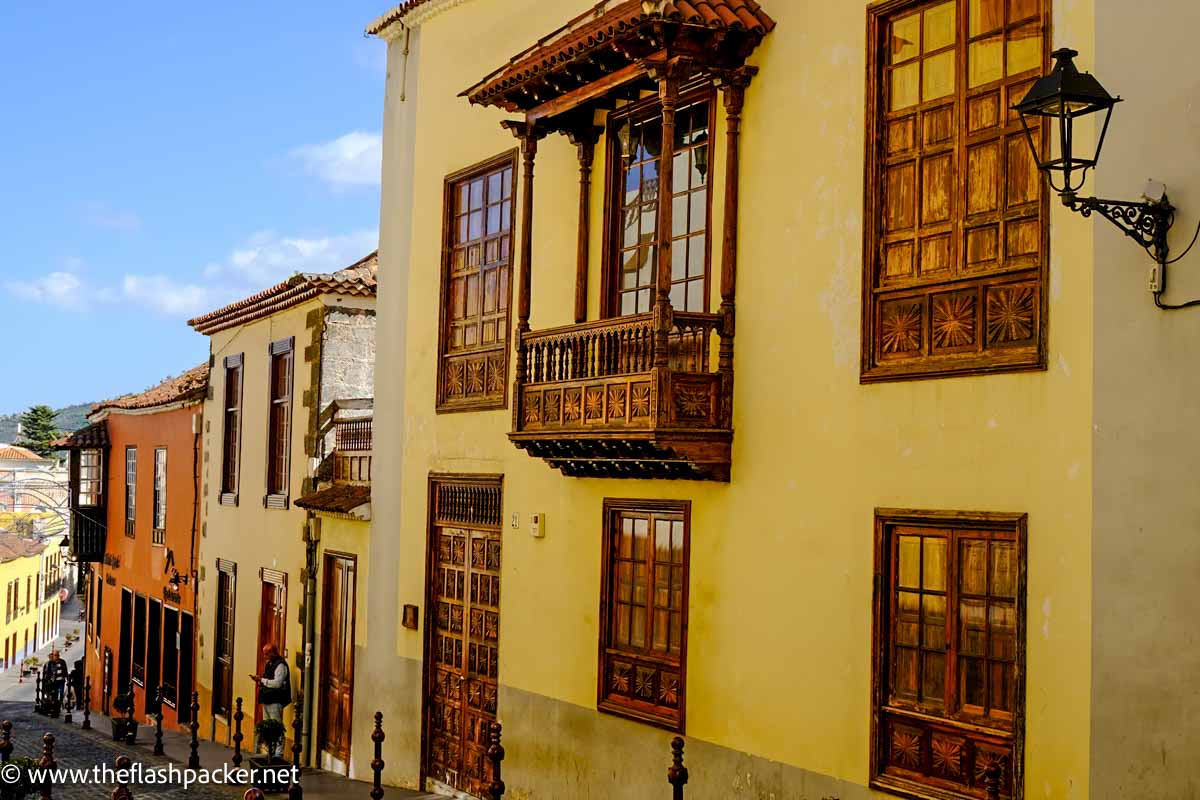
What to see and do in La Orotava
- Stroll through La Orotava’s historic streets
- Visit the Casas de Los Balcones
- Explore the art of Spain and Mesoamerica at Museo de Artesania Iberoamericana (MAIT) housed within the former Dominican monastery of San Domingo
- Take a stroll around La Orotava’s small botanical garden
- Admire the view from Jardins del Marquesadode al Quinta Roja
- Take a look at the unusual statue of Christ of Humility and Patience in the Iglesia de San Agustin
Day 5: Day trip to Mount Teide
Parque Nacional del Teide is the largest national park of the Canary Islands and Mount Teide (El Teide) at almost 4,000 meters, is Spain’s highest mountain.
Most visitors take the cable car up the mountain for a view over Tenerife. However, if it’s too windy the cable car will be out of action.
The other option is to take one of the hiking trails in the national park. There are marked paths accommodating all fitness levels, that lead through Las Cañadas, the giant caldera at the heart of the national park, and up to Mount Teide.
Note that permits are needed for some hikes.
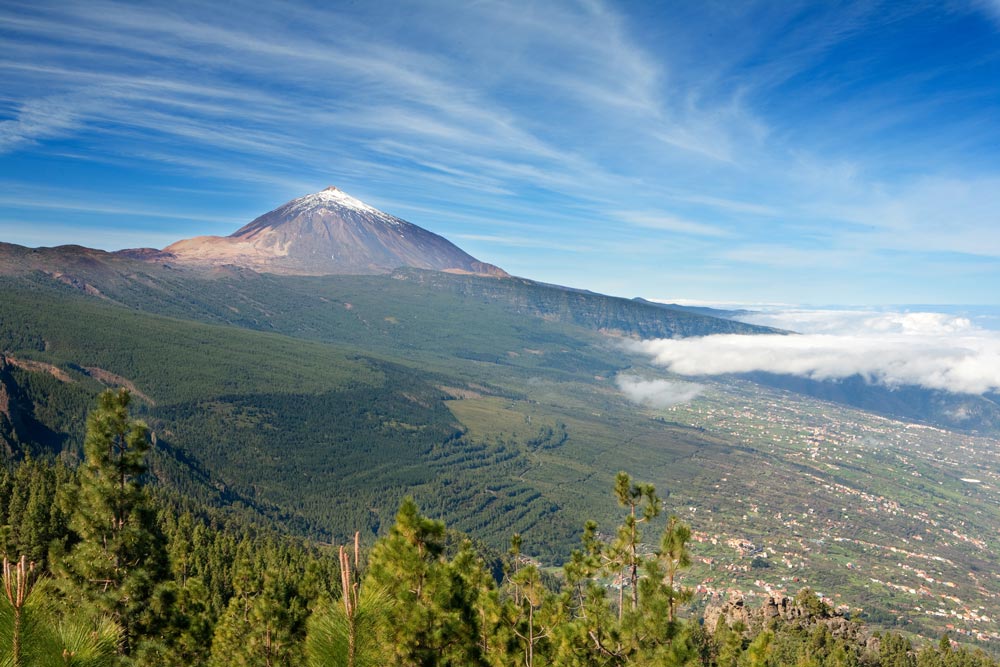
How to get to El Teide from Puerto de La Cruz
Without a car, your options for getting to El Teide are limited.
There is a daily bus service (#348) that leaves Puerto de La Cruz at 9.30 am, returning at 4 pm. As this is a popular bus service, arrive early to ensure a seat.
Another option is to take an organised day trip to Mount Teide. Learn from my mistake and book well in advance. Here are a few highly-rated options:
Teide and Masca Tour from Puerto de la Cruz
This includes pick-up from your Puerto de la Cruz hotel and the picturesque village of Masca.
Teide National Park Stargazing
Did you know that Teide National Park is the 3rd best place in the world to view stars and has been described by NASA as a window to the universe? This tour includes an optional transfer from bus stops outside of the listed hotels, or at Titsa bus stops.
Grand Tour of Teide and Northern Tenerife
This tour, which also sets out from Puerto de la Cruz, includes Icod, Garachico and Masca
Mount Teide Hiking Tour from resorts in southern Tenerife
This includes a cable car ticket and a partial ascent of the mountain on foot with a photo stop at Roques de Garcia
Day 6: Icod de Los Vinos and Garachico
Tenerife’s legendary dragon tree, Drago Milenario, in Icod de Los Vinos. It is thought to be 500 – 600 years old and is the largest example of this species on the island.
Garachico is one of Tenerife’s prettiest towns, known for its historic town centre and its natural rock bathing pools. Much of the original town was destroyed by a volcanic eruption in 1706, burying one of the island’s most important ports and wealthiest towns. A new town was built on the cooled lava and, miraculously, some of its buildings survived unscathed.
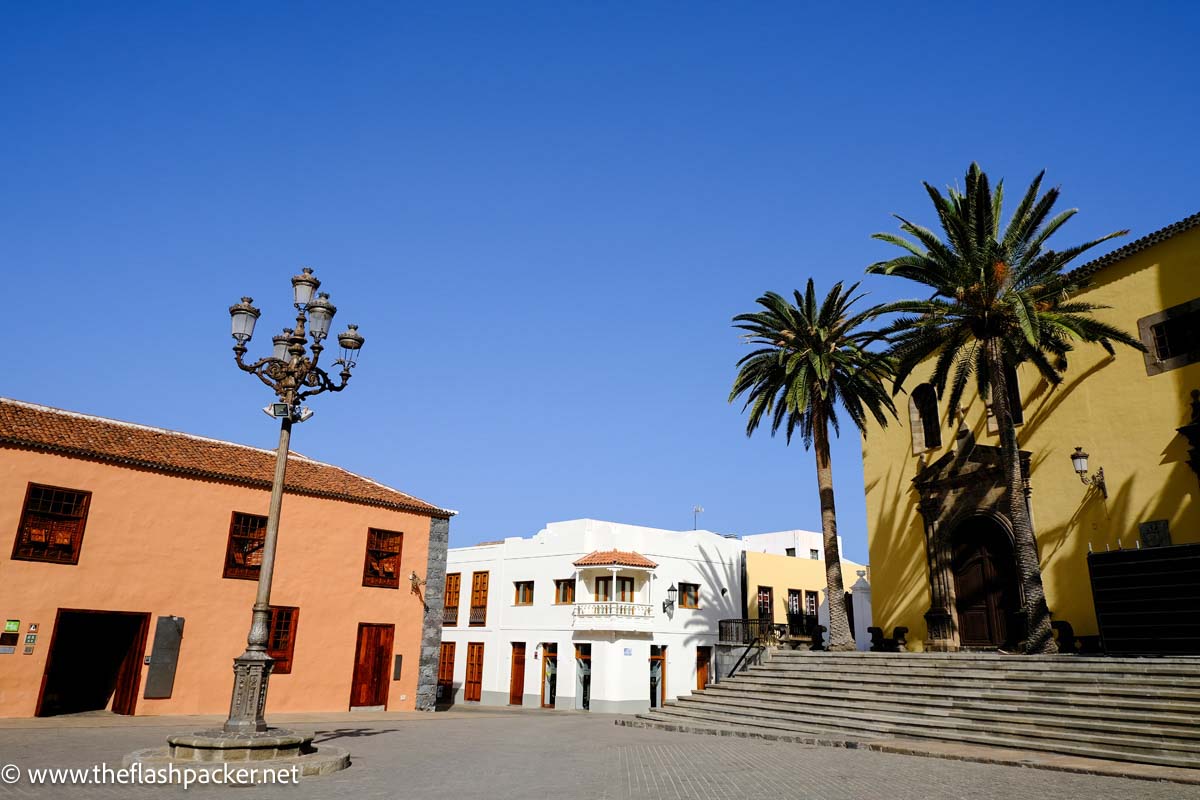
Getting to Icod de Los Vinos and Garachico
The one-hour journey on the frequent 363 bus service from Puerto de La Cruz to Icod takes you along twisting roads, past lush banana plantations, precariously perched vineyards and dried-up river gorges. Sit on the right-hand side of the bus for dramatic views over the Atlantic once you leave San Vicente.
Hop back on the #363 in Icod bus station to continue your journey to Garachico, 15 minutes west. I recommend getting off the bus to Garachico at the first stop for the town. It’s a lovely walk along the promenade with the old town to your left.
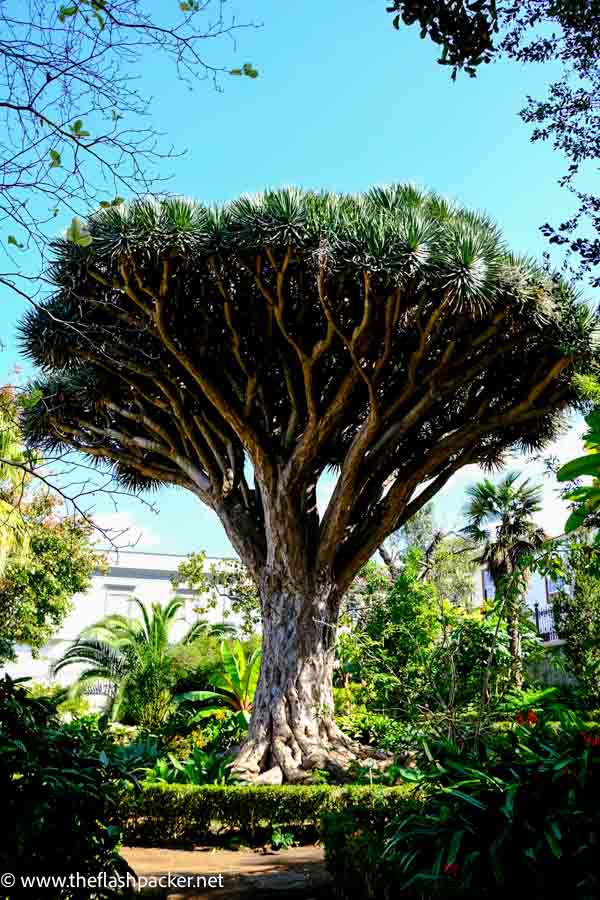
What to see and do in Icod de Los Vinos
- See that dragon tree!
- Visit the Iglesia San Marcos
- Watch life go by in the Plaza de Pila
What to see and do in Garachico
- Wander along the paths of El Caletón, Garachico’s natural rock bathing pools
- Relax in Plaza della Libertad
- Visit Iglesia de Santa Ana
- Visit the Castillo de San Miguel
- Visit the Convento de San Francisco
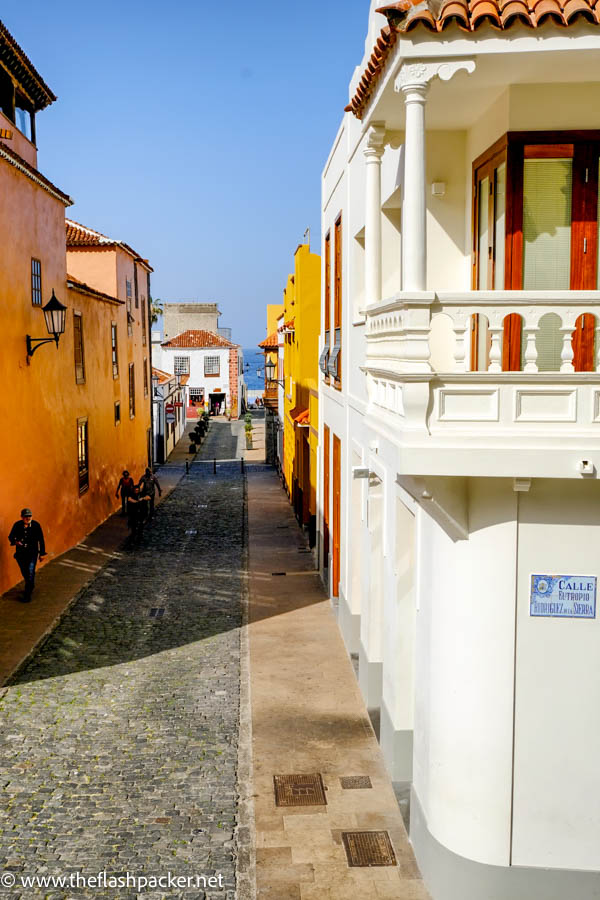
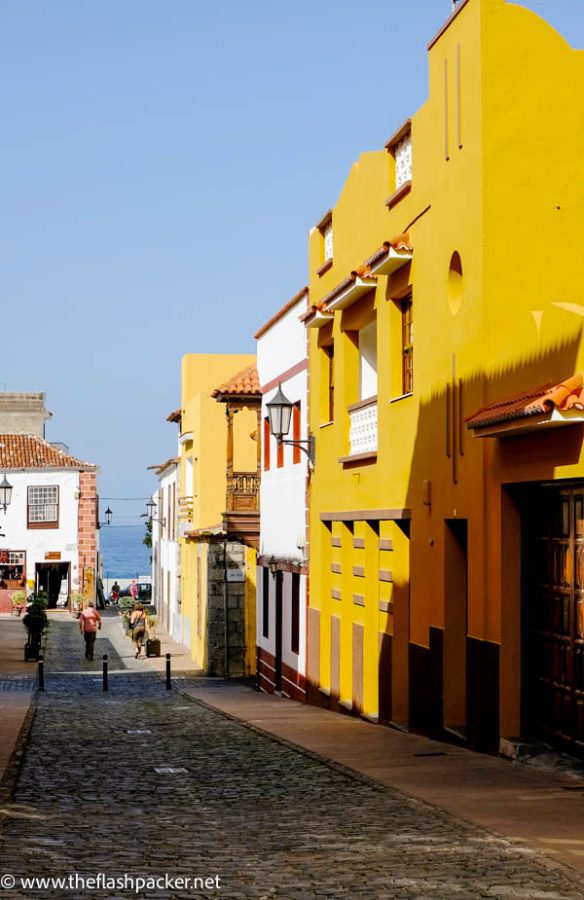
Where to eat in Garachico
Grab a table at the seafront Ardeola (Av. Tomé Cano 4) for their menu del dia. Great food reasonably priced.
Day 7: An easy hike in the Anaga Forest
Sadly, it’s the final day of your week in Tenerife but let’s finish on what was my highlight: The Anaga Forest. This primaeval laurel forest, northeast of La Laguna and Santa Cruz, is prime hiking territory.
And on a clear day, the views from the forest’s miradores are sensational. From the highest one, Pico del Inglés, there are sweeping views that take in Punta del Hildalgo and the beach at Las Teresitas.
Many waymarked hiking trails are available. Even if you have left your hiking boots at home, you should be able to manage the easy Sendero de los Sentidos (Path of The Senses) in a pair of trainers (sneakers).
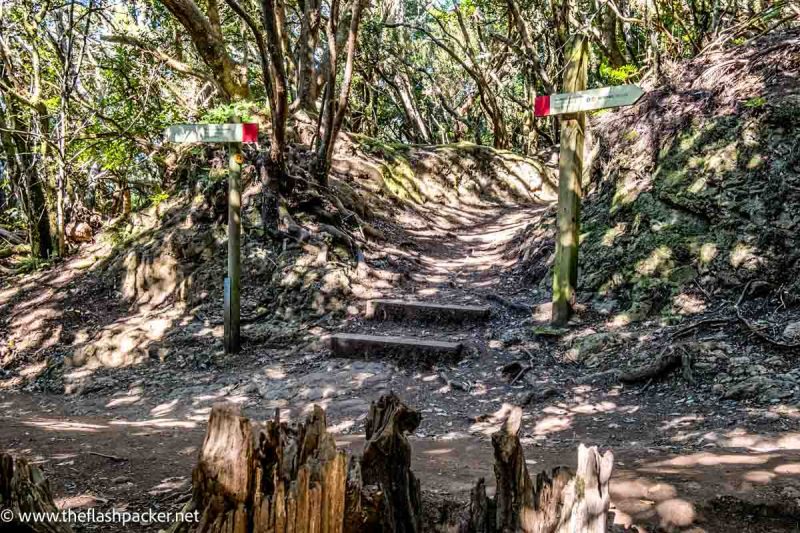
In fact, Sendero de los Sentidos comprises three tracks of varying length and difficulty.
Path 1 is the shortest, designed for those with mobility issues. Path 3 is the longest – it will take around 45 minutes to complete – and takes in two miradors.
As all paths are clearly marked, you won’t need a map to walk the Sendero de Los Sentidos. The information office at Cruz del Carmen will provide a free map but this isn’t worth picking up.
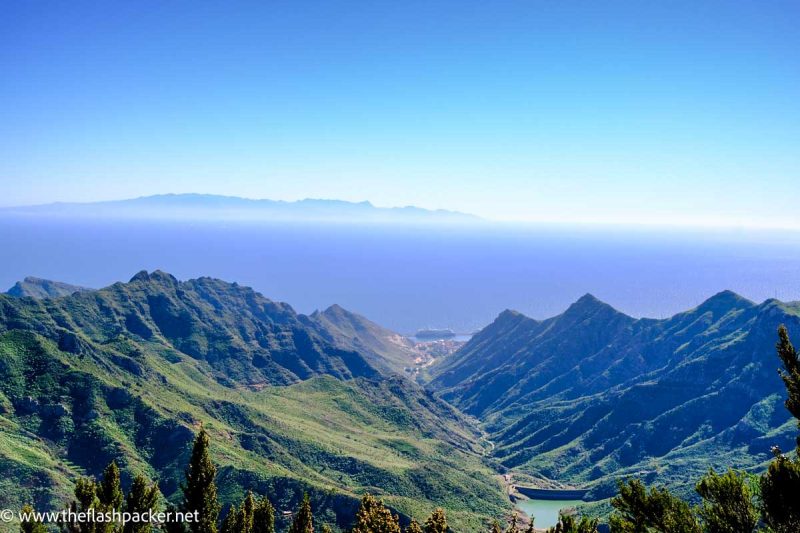
How to get to the Anaga Forest
As bus services are infrequent, this day trip from Puerto de La Cruz will take a little more planning.
From Puerto de La Cruz, take bus #102 or #103 to La Laguna. At La Laguna, change onto the #76, #77, #273 or #275 and alight at Cruz del Carmen.
This second bus journey is wonderful. The Anaga Forest begins at Les Mercedes, climbing to the viewpoint at Le Jardin before reaching Cruz del Carmen. The journey time from La Laguna is around 20 minutes.
To plan your journey, check Tenerife bus times here.
Are you looking for a 5-day Tenerife Itinerary?
If you don’t have a week to spare – or want more beach or pool time – simply modify this itinerary.
For instance, if you are not a person who is keen on the great outdoors and walking, ditch Teide and the Anaga Forest. This will give you time to explore Tenerife’s colonial towns and its capital.
To help you put together a 5-day itinerary, here are the places that I consider must-sees, and where to go if you have the time
Must-see places in Tenerife
- Anaga Forest
- Mount Teide
- La Laguna
- La Orotava
Places to visit in Tenerife if you have enough time
- Icod de Los Vinos (there’s not much more to the town than the dragon tree)
- Garachico (a lovely town but short on sights, especially with the closure of Convento de San Francisco)
- Santa Cruz de Tenerife (a taste of Tenerife city life but perhaps better suited to those who are keen on museums and architecture)
Best Time to Visit Tenerife
Tenerife is a year-round destination.
Northern Europeans flock there in the winter months to escape the cold back home. Those from the Spanish mainland visit during the summer months to avoid the city heat
Tenerife’s climate is subtropical, meaning that it is usually pleasant whichever month you visit. You are looking at an average of 19 degrees in the winter and 26 degrees in the summer, the heat moderated by the cooling trade winds
However, on balance, spring, autumn (fall) or December / January are good times to visit Tenerife. Thanks to those trade winds, the summer months (June – August) can be overcast.
The north of the island is cooler and wetter than the south, with November and February the rainiest months.
When I visited in January, I enjoyed long hours of clear skies and sunshine. Whilst it wasn’t bikini weather – although there were some people basking in the sun – the mid-20s temperatures were perfect for sightseeing and hiking
Getting There
Most people arrive in Tenerife through one of its two airports: the older Tenerife North Airport (or Los Rodeos) or Tenerife South Airport (also known as Tenerife South-Reina Sofia Airport).
The larger Tenerife South-Reina Sofia Airport (TFS) handles almost all of the island’s international air traffic. Tenerife North Airport (TFN) acts primarily as the inter-island hub, connecting Tenerife with the other six Canary Islands and the Spanish mainland.
There are sea connections to Cadiz on the mainland and to the other Canary Islands from the port of Los Cristianos in the south, and from Santa Cruz de Tenerife in the north.
Tenerife is also a popular port of call for cruise ships that dock at Santa Cruz de Tenerife.
Getting Around Tenerife
Hiring a car in Tenerife is relatively inexpensive. Whilst this gives you complete freedom, parking can be challenging at the more popular tourist sites and navigating the island’s mountain roads requires nerves of steel.
So why not take the bus instead?
Thanks to cheap fares and an extensive network that reaches all corners of the island, exploring Tenerife by bus is a breeze. What you lose in flexibility you gain in chill-out time, watching the landscape unfurl from the comfort of your window seat.
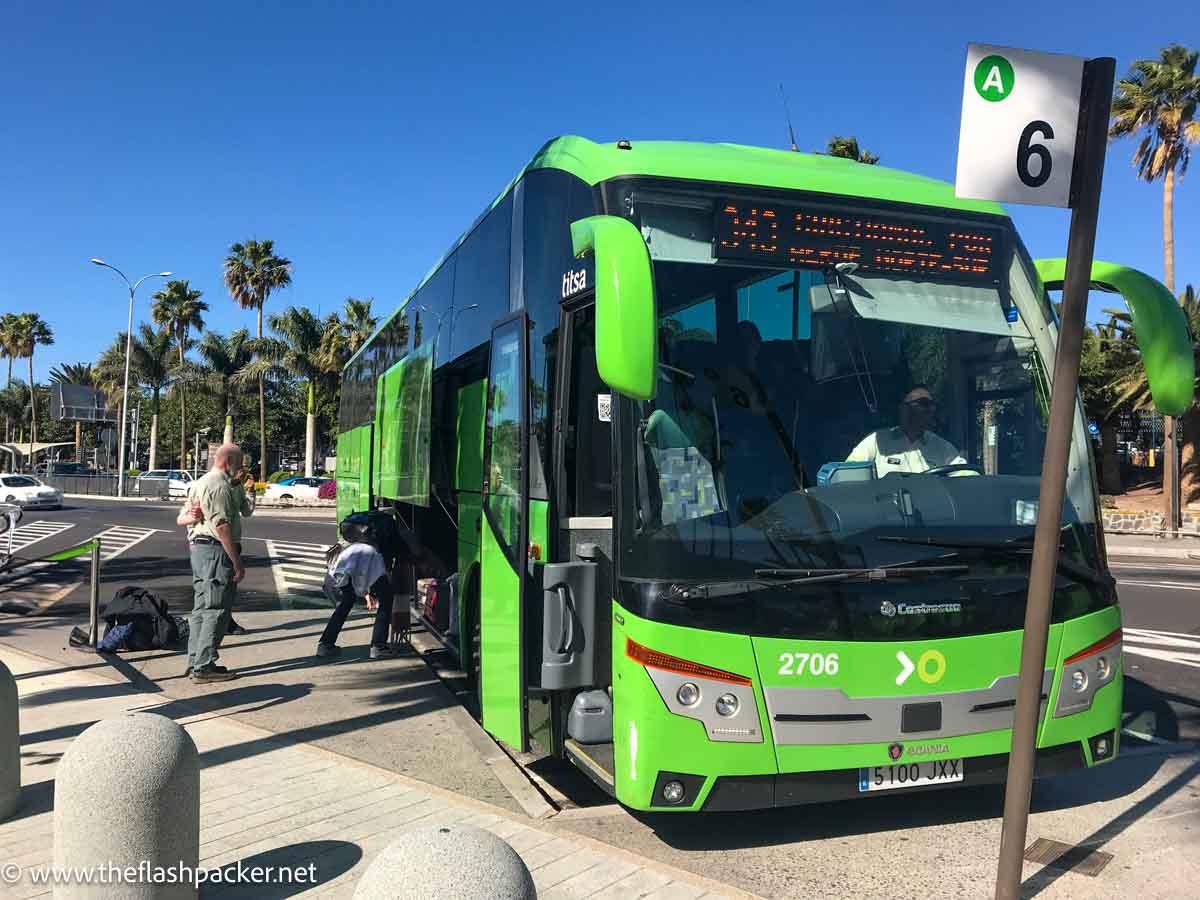
Pick up a Tenmas (ten+) card from the bus station or airport on arrival. This will cost you 2 Euro which you then load with credit from 5 – 100 Euro.
Acting as a pre-paid electronic ticket, you simply tap the ten+ card on the reader as you board the bus and again as you disembark. The correct fare is deducted from your balance which is displayed on the reader.
For the few places that buses don’t reach or if you want to pack as much into your week as possible, organised day excursions of Tenerife are excellent alternatives.
Where to Stay in Tenerife
Ultimately, your Tenerife base will depend on your itinerary whilst on the island.
Package tourists descend on the resorts in the south: for example, Playa de las Américas, Costa Adeje or Los Cristianos.
However, for a more authentic experience and a good base from which to explore Tenerife, pick Puerto de la Cruz, the largest tourist town in the north. Resolutely Canarian in character, Puerto de la Cruz’s squares, churches and old houses betray its origins as a fishing village.
From a practical viewpoint, it has a decent choice of accommodation and good bus connections to the rest of the island.
If you are looking to stay in a smaller town, consider La Laguna.
Alternatively, if it’s city life you crave, Santa Cruz de Tenerife, the island’s capital, is another option.
Where to Stay in Puerto de la Cruz
The good news is that you won’t be stuck for somewhere to stay in Puerto de la Cruz and the sheer number of properties keeps accommodation affordable.
However, the majority of hotels and apartments are built on a cliffside, a steep uphill walk from the sea and bus station.
Therefore, if possible, choose a place in or near the old town, within easy walking distance of many great restaurants, the main sights of Puerto de la Cruz and its bus station. Most of your options will be apartments.
Here are my recommended places to stay:
Miranda Penthouse AI
I stayed at this wonderful apartment in the heart of the old town with sweeping views across the ocean. Highly recommended.
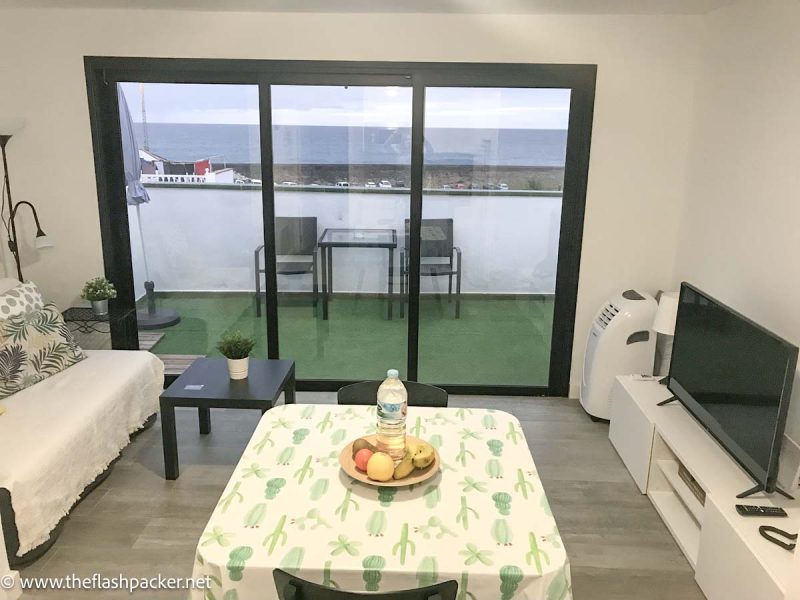
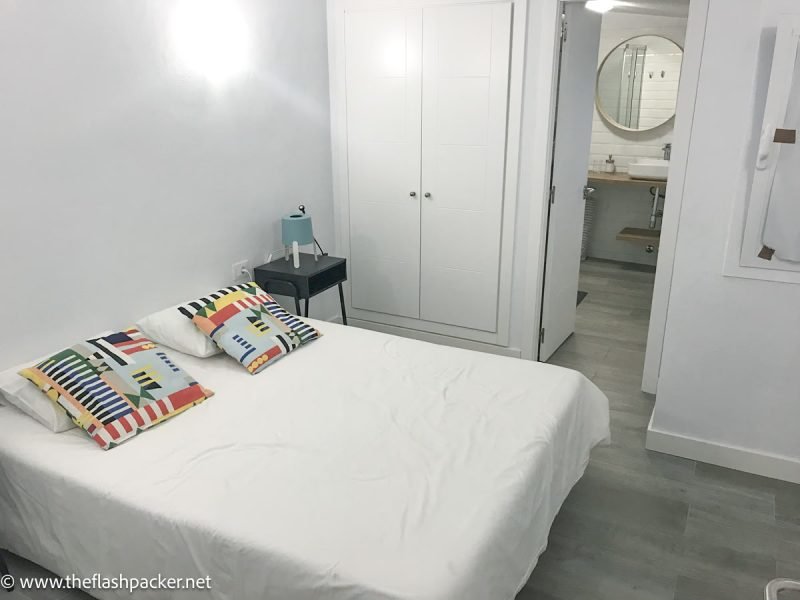
>>> CLICK HERE TO CHECK RATES & BOOK
Here are a few other places to stay that I have found that are good alternatives:
4Dreams Hotel Chimisay
A centrally-located hotel in the heart of Puerto de la Cruz’s old town, providing breakfast for a small additional charge.
>>> CLICK HERE TO CHECK RATES & BOOK
Hotel Botanico y Oriental Spa Garden
If you want to stretch the holiday budget, you can’t go far wrong with this 5-star luxury hotel. Whilst it is not located in the old town, it makes up for this with its three 3 outdoor pools, attractive gardens and extensive spa facilities.
>>> CLICK HERE TO CHECK RATES & BOOK
And that’s a wrap!
I hope this one-week Tenerife will help you plan your time there and that you will love the island as much as I did. I visited Tenerife as a solo traveller and, for my money, it’s one of the best places to travel alone in Spain.
One of the reasons to visit Spain is to chill out on one of its islands. But if you are staying in one of the resorts in southern Tenerife, don’t spend your week by the pool. There’s so much to see on the Island.
Getting your hands on a good guidebook to help you explore the country is a smart move. I highly recommend this excellent Marco Polo guide, which was my constant companion when I visited Tenerife.
Finally, if you’ve found this article helpful, take a look at my other Tenerife guides to help you plan your vacation:
- Tenerife Solo Travel: The Ultimate Guide
- Top 10 Things to Do in Puerto de la Cruz, Tenerife
- Exploring Tenerife by Bus: TITSA Buses Made Easy
- The Top 10 Tenerife Excursions

About Bridget
Bridget Coleman has been a passionate traveller for more than 30 years. She has visited 70+ countries, most as a solo traveller.
Articles on this site reflect her first-hand experiences.
To get in touch, email her at hello@theflashpacker.net or follow her on social media.
